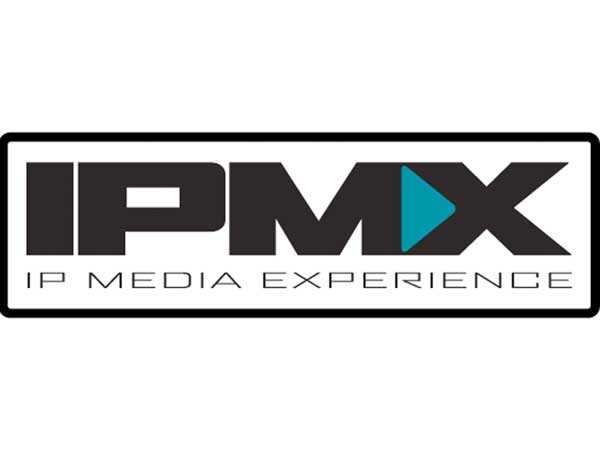
To understand the development of Internet Protocol Media Experience (IPMX)—a set of open standards and specifications for AV-over-IP deployments—we must first delve into the broadcast industry and the implementation of SMPTE ST 2110.
First Steps
The story starts about a decade ago, when it became clear that an IP infrastructure would not only be viable for television broadcasting, it would be the preferred platform. After all, 10 Gb datacenter-scale internet switches were readily available and offered ample bandwidth.

Furthermore, following Moore’s Law, high-bandwidth switch ports would continue to improve at a rapid pace, and they would become less expensive as they did. This technology trajectory sparked SMPTE, in addition to vendors and other relevant organizations, to explore and advance the use of IP technology in the broadcast industry.
For guidance, the informal consortium closely observed the transition that occurred in the audio industry, which began its shift toward IP-based production around 2010. What they found is that every vendor initially developed its own proprietary solution, which led to a market full of incompatible audio-over-IP systems.
The situation was far from ideal; it didn’t favor the vendors who built the systems, nor was it advantageous for customers who wanted to integrate equipment from different manufacturers. The result was the creation of a chaotic environment that took the audio industry a considerable amount of time to untangle.
To avoid a similar scenario, leading standards bodies in the broadcast industry sought a different approach toward IP-based systems: Establish a common, industry-wide technical roadmap leveraging off-the-shelf commercial networking technologies. This would allow end users to select switches, cameras, multiviewers, replay systems, and other equipment from various manufacturers and seamlessly integrate it into comprehensive systems.
To achieve this goal, a group of broadcast engineers, technologists, vendors, business executives, and others founded the Alliance for IP Media Solutions (AIMS), a trade organization dedicated to fostering the adoption of industry standards to help facilitate the broadcast and media industry’s transition from SDI to IP.
Next Stop: Pro AVFinal Destination
AIMS was instrumental in promoting the adoption of SMPTE ST 2110—a suite of standards for transporting digital video, audio, and metadata over IP—the Advanced Media Workflow Association’s (AMWA) NMOS specification for networked media, the AES67 standard for audio IP, and other related technologies in the marketplace.
With broadcasters now fully embracing Video-over-IP, AIMS set its sights on the Pro AV industry, which like the audio industry before it, began its journey to an IP infrastructure with proprietary solutions."
Through the work of AIMS, SMPTE, AMWA, the Video Services Forum (VSF), and others, the broadcast industry was remarkably successful in establishing a common ground based on these standards. Today, virtually every new project utilizes and builds on these technologies, fostering a more comprehensive and interoperable broadcast ecosystem.
With broadcasters now fully embracing Video-over-IP, AIMS set its sights on the Pro AV industry, which like the audio industry before it, began its journey to an IP infrastructure with proprietary solutions. To address the industry’s need for a common set of standards and protocols in the transition to AV-over-IP—ensuring interoperability across a diverse range of applications, from enterprise conference rooms to digital signage systems in football stadiums—the organization began development of IPMX.
[Why It's Time for Pro AV to Take Digital Twin Metaverse Technology Seriously]
Fortunately, AIMS had a running start in its creation. Not only do Pro AV applications share many of the same requirements as broadcasting, but with the successful establishment of a multi-vendor, interoperable ecosystem in the television broadcast domain, AIMS had a clear path to follow. Established technologies including SMPTE ST 2110, AMWA NMOS IS-04 and IS-05, and others would serve as the foundation within the IPMX framework for the packaging and organization of video content.
However, while the broadcast and Pro AV industries have many requirements in common, Pro AV environments do present some additional ones, and accommodating them has been at the core of IPMX’s development. For example, facilitating extended display identification data (EDID) negotiations over IP networks when connecting displays to sources has been a significant area of focus and development for IPMX.
In addition, high-bandwidth digital content protection (HDCP) is essential for HDMI applications, but isn’t typically employed in traditional SDI broadcasts. By ensuring the secure handling of protected content, HDCP support holds great significance within the IPMX framework, and was a key priority in establishing a robust and comprehensive standard.
To overcome these technical hurdles, they were parceled out to individual standards groups and trade associations based on their knowledge and experience in certain domains. For example, AMWA was tasked with addressing EDID negotiations and facilitating format chats and negotiations throughout the entire workflow.
And within the VSF, an IPMX working group addressed the intricate aspects of signal-level details, which encompassed crucial areas such as the functioning of HDCP negotiations and the mapping of formats into the SMPTE ST 2110 standard. Through such advancements and augmentations, IPMX has evolved as a comprehensive solution that expands on existing standards to ensure seamless interoperability and efficient format negotiations within the IPMX ecosystem.
The standard has made significant progress since AIMS began its work. Approximately two-thirds to three-quarters of the components comprising IPMX have already been published, including the initial drafts of VSF’s TR-10 suite of Technical Recommendations, which recently became available for download on VSF’s website. The TR-10 suite outlines the differences between SMPTE ST 2110 and IPMX, with documents covering everything from system time and definitions, to using AMWA NMOS APIs, to the transparent transport of AES3 audio using the RTP protocol.
In addition, ongoing studies are being conducted to determine optimal profiles and levels for specific codecs in various applications. The current focus is primarily on establishing market-facing profiles and levels, and specifying the mandatory and optional features that vendors must adhere to in order to obtain IPMX certification.
The primary goal of AIMS and its members is to ensure that IPMX attains the same level of adoption and widespread implementation in the Pro AV industry as SMPTE ST 2110 has in broadcasting. Currently, IPMX is following a trajectory similar to that of SMPTE ST 2110, and is expected to reach a comparable level of market acceptance in the near future. And as the final stages of standardization are completed, a surge of IPMX-certified products is expected to hit the market, marking a new era of AV-over-IP deployments.
This article originally appeared on TV Tech sister brand Systems Contractor News.







